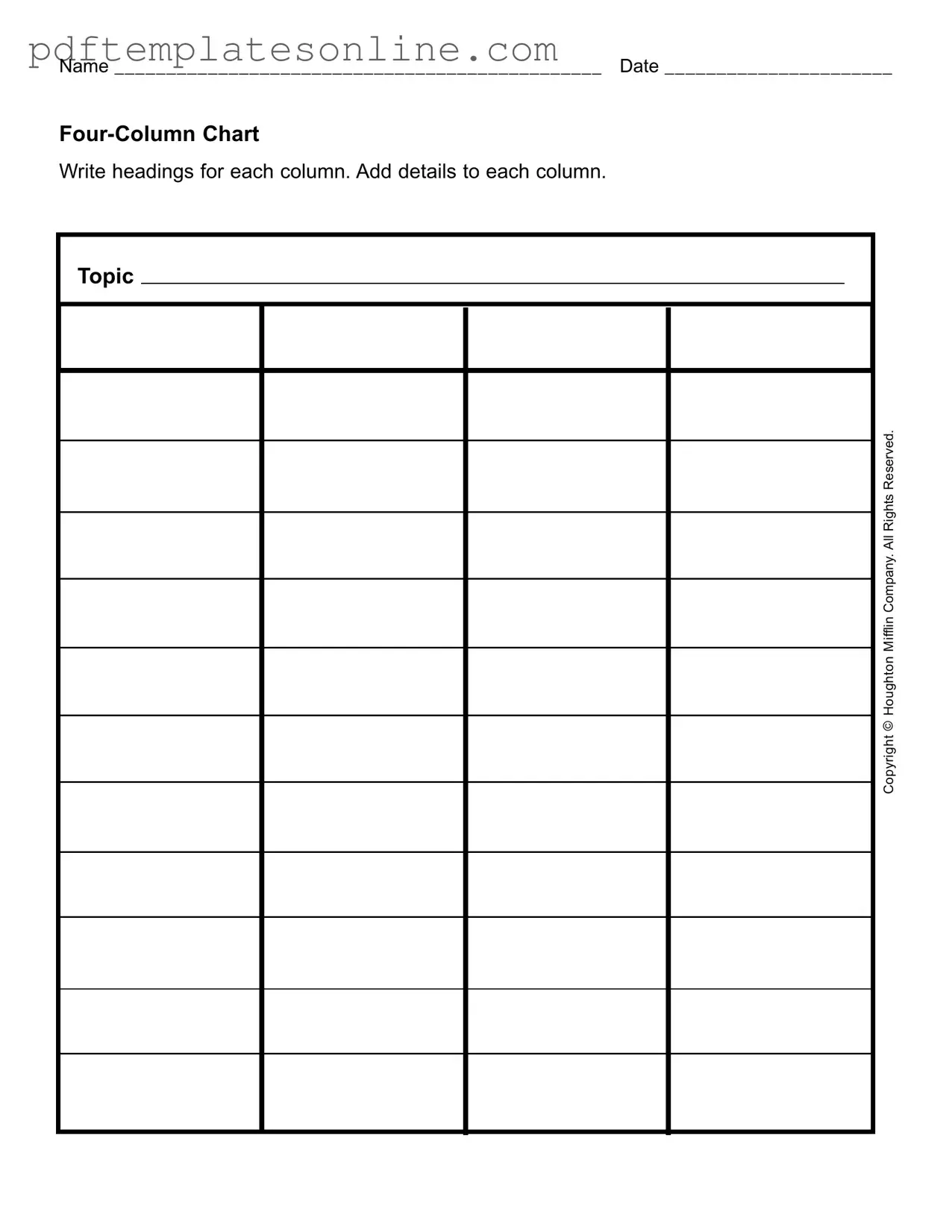When filling out the Four Column Chart form, many individuals encounter common pitfalls that can lead to confusion or incomplete submissions. One of the most prevalent mistakes is neglecting to write clear headings for each column. Without specific headings, the purpose of each section becomes ambiguous, making it difficult for anyone reviewing the chart to understand the information presented. Clarity is crucial; therefore, taking the time to label each column appropriately is essential.
Another frequent error is failing to provide sufficient details in each column. Each section is designed to capture important information related to the topic, in this case, the Mifflin Company. If the details are vague or incomplete, the value of the chart diminishes significantly. It is vital to ensure that each column is filled with relevant and comprehensive information to convey the intended message effectively.
In addition to unclear headings and insufficient details, some people overlook the importance of organization. A disorganized chart can create confusion and may lead to misinterpretation of the information. To avoid this mistake, it's advisable to arrange the content logically. This could mean grouping similar ideas together or following a chronological order, depending on the topic being discussed.
Another mistake that often occurs is the use of inconsistent formatting. When filling out the Four Column Chart, maintaining a uniform style throughout is critical. Inconsistent font sizes, colors, or styles can distract from the content and make it harder for the reader to focus on the information being presented. Ensuring that the formatting is consistent not only enhances readability but also adds to the professionalism of the document.
People also frequently forget to proofread their entries before submitting the form. Typos, grammatical errors, or incorrect information can undermine the credibility of the chart. Taking a few extra moments to review the content can prevent misunderstandings and ensure that the information is accurate and professional.
Additionally, some individuals fail to consider the audience for whom the chart is intended. Understanding who will read the chart can significantly influence how the information should be presented. Tailoring the content to meet the needs and expectations of the audience can enhance its effectiveness and clarity.
Finally, a common oversight is not adhering to any specific guidelines or requirements that may accompany the form. If there are particular instructions provided for filling out the Four Column Chart, ignoring them can lead to incomplete or improperly formatted submissions. Always check for guidelines before starting to fill out the form to ensure compliance and avoid unnecessary delays.
